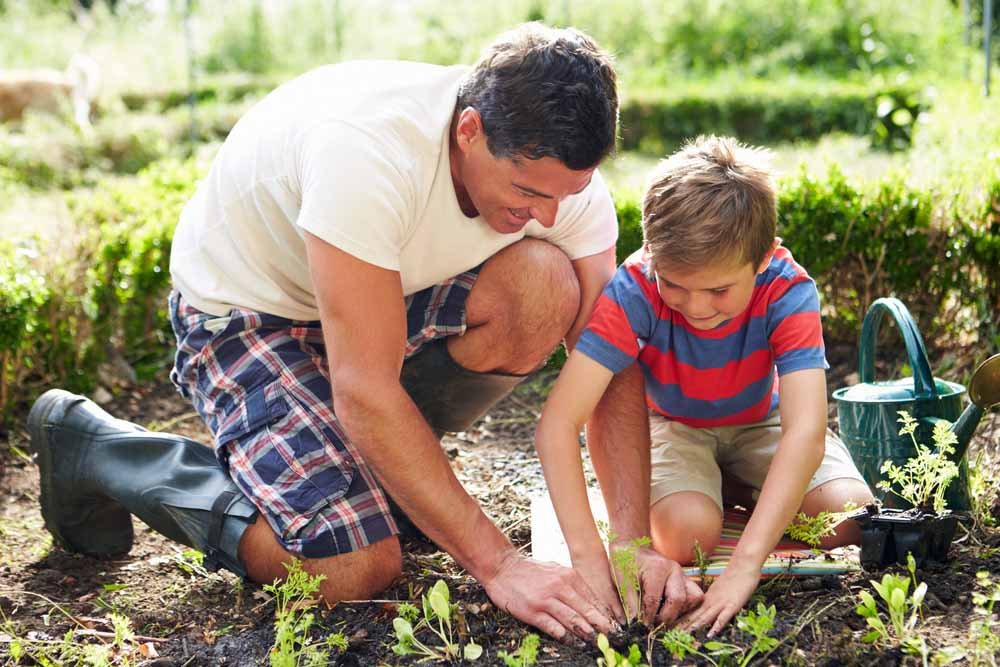Growing Together: The Joy of Gardening with Children
(Written by Emily Thomas)
Gardening isn't just for adults with green thumbs. It's an enriching experience that can captivate the curiosity of young minds while fostering a deep connection with nature. Involving children in gardening not only teaches them about plants and ecosystems but also instills valuable life skills like responsibility, patience, and environmental stewardship. In this blog post, we'll explore the myriad benefits of gardening with young children, offer tips on how to involve them in the process, and share some creative gardening activities to make the experience fun and memorable.
Benefits of Gardening with Young Children
Educational Opportunities: Gardening provides a hands-on learning experience for children to understand the life cycle of plants, the importance of soil and water, and the role of pollinators in the ecosystem. Watching seeds grow is an amazing science project for kids. Seed germination experiments allow kids to see up close to how a seed grows and what would actually be happening under the ground! They learn scientific concepts in a practical and engaging way, sparking their curiosity and encouraging them to ask questions.
Healthy Habits: Gardening encourages children to spend time outdoors, away from screens, and engage in physical activity. Digging, planting, watering, and harvesting all contribute to their physical development and overall well-being. Plus, the nutritious fruits and vegetables they grow can foster healthier eating habits.
Responsibility and Patience: Caring for a garden requires consistent effort and patience. Children learn the importance of responsibility as they water the plants, pull weeds, and protect them from pests. They also learn to wait patiently as they observe the gradual growth and transformation of their plants over time.
Connection with Nature: In today's fast-paced world, gardening offers a much-needed opportunity for children to connect with nature. It fosters a sense of wonder and appreciation for the natural world, teaching them to respect and care for the environment.
How to Involve Young Children in Gardening
Start Small: Begin with simple gardening tasks that are suitable for their age and attention span. Planting seeds or seedlings of fast-growing plants like sunflowers, radishes, or cherry tomatoes is a great way to start. This egg carton greenhouse activity helps seeds sprout faster and is a simple way to teach how to create perfect conditions for plants and planting different types of seeds.
Make it Fun: Turn gardening into a fun and interactive activity by incorporating games, storytelling, and exploration. Create scavenger hunts or “I Spy” games to find different types of leaves or insects in the garden, or even plant a “Salad” or “Pizza” garden using veggies and herbs from your children’s favorite salads, soups or pizza.
Give Them Ownership: Let children take ownership of their own garden space, whether it's a small plot in the backyard or a container garden on the balcony. Allow them to choose which plants to grow and involve them in every step of the process, from planting to harvesting.
Be Patient and Encouraging: Gardening with children can be messy and unpredictable, but it's important to remain patient and encouraging. Celebrate their successes, no matter how small, and use any setbacks as learning opportunities.
Creative Gardening Activities for Children
Garden Journal: Encourage children to keep a garden journal where they can record their observations, drawings, and thoughts about the plants they're growing. This not only reinforces literacy skills but also helps them track the progress of their garden over time.
Sensory Garden: Create a sensory garden with a variety of plants that appeal to different senses – fragrant herbs like mint and lavender, soft lamb's ear leaves, fuzzy caterpillar-friendly plants, and crunchy vegetables like snap peas. Place a “please touch plants” sign to inspire children to feel the textures of different plants and flowers. As children walk, ask them to describe what noises they hear and what colors they see. If your garden has fragrant herbs, encourage children to smell and taste the edible plants - to explore using all of their senses.
DIY Plant Markers: Get creative and make your own plant markers using popsicle sticks, painted rocks, or recycled materials. Let children decorate the markers with drawings or labels to identify the plants in their garden.
Befriending the Birds and Bugs: Children are intrigued by birds and bugs alike, so a chance to study them is fascinating. One excellent activity for children in the garden is birdwatching, which can be coupled with bird feeding. Using these DIY kid-friendly bird feeders will provide you and your children a beautiful addition to your garden. Homemade bug houses are a relatively easy craft to make that allows children to observe and learn about bugs. All you need is an empty container with tiny mesh windows to ensure the bugs stay alive and children have room for observation.
Garden Art Projects: Channel children's creativity into art projects inspired by the garden. Collect fallen leaves or petals to make colorful collages, create nature-inspired sculptures using twigs and clay, or press flowers to make bookmarks or greeting cards.
Gardening with young children is a rewarding experience that offers a host of benefits for both their physical and emotional development. By involving children in the gardening process and providing them with opportunities for exploration and creativity, we can nurture their love for nature and instill lifelong skills and values. So grab your trowels and seeds, and embark on a green-thumbed adventure with your little ones – the garden awaits!

